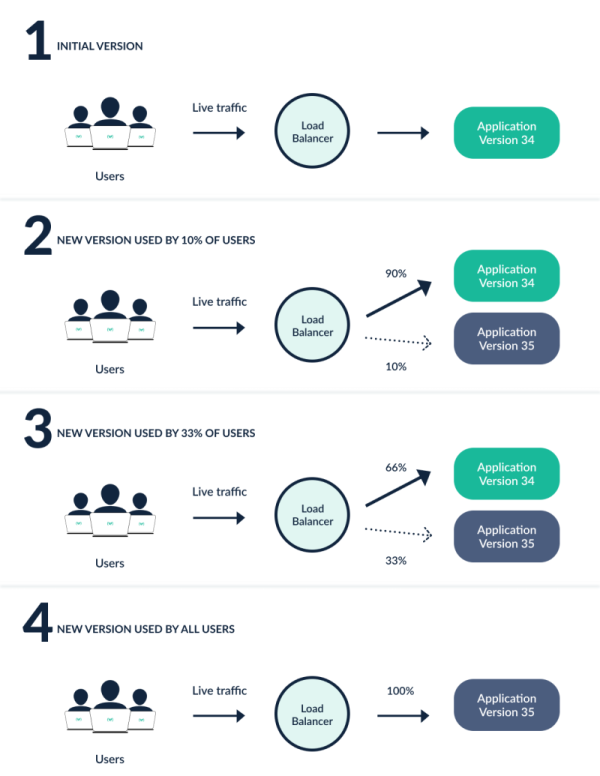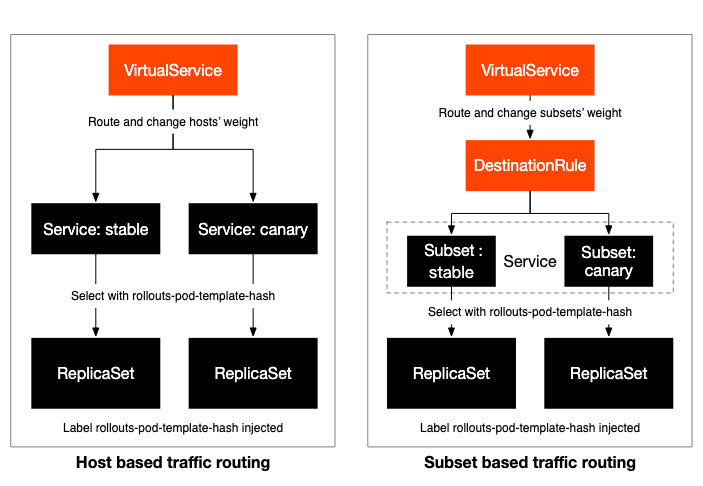ArgoCD Rollout vs. Flagger: Setup Guide and Analysis
The simplicity of Flagger is appealing, but if you’re a team of multiple platform engineers, a dashboard/UI with ArgoCD Rollout could be a better option for you.
Join the DZone community and get the full member experience.
Join For FreeWith the rise of high-frequency application deployment, CI/CD has been adopted by the modern software development industry. But many organizations are still looking for a solution that will give them more control over the delivery of their applications such as the Canary deployment method or even Blue Green.
Called Progressive Delivery, this process will give organizations the ability to run multiple versions of their application and reduce the risk of pushing a bad release.
In this post, we will focus on Canary deployment as there’s a high demand for organizations to run testing in production with real users and real traffic which Blue Green deployment cannot do.
ArgoCD vs. Flagger: Overview

A Canary deployment will be triggered by ArgoCD Rollout and Flagger if one of these changes ais applied:
- Deployment PodSpec (container images, commands, ports, env, resources, etc)
- ConfigMaps mounted as volumes or mapped to environment variables
- Secrets mounted as volumes or mapped to environment variables
Why Not Use Kubernetes RollingUpdate?
Kubernetes offers by default their RollingUpdate deployment strategy, but it can be limited due to:
- No fine-grained control over the speed of a new release, by default Kubernetes will wait for the new pod to get into a ready state and that’s it.
- Can’t manage traffic flow, without traffic split, it is impossible to send a percentage of the traffic to a newer release and adjust its percentage.
- No ability to verify external metrics such as Prometheus custom metrics to verify the status of a new release.
- Unable to automatically abort or rollback the update
What Is ArgoCD Rollout?
Just a year after ArgoCD creation, in 2019 the group behind the popular ArgoCD decided to overcome these limitations from Kubernetes by creating ArgoCD Rollout as a Kubernetes Controller used to achieve Canary, Blue Green, Canary analysis, experimentation, and progressive delivery features to Kubernetes with the most popular service mesh and ingress controllers.
What Is Flagger?
Created in 2018 by the FluxCD community, FluxCD has been growing massively since its creation and offers Flagger as one of its GitOps components to deal with progressive delivery on Kubernetes.
Flagger helps developers solidify their production releases by applying canary, A/B testing, and Blue Green deployment strategies.
It has direction integration with service mesh such as Istio and Linkerd but also ingress controllers like NGINX or even Traefik.
How ArgoCD Rollout and Flagger Work With Istio
If you are using Istio as a service mesh to deal with traffic management and want to use Canary as a deployment strategy:
- ArgoCD Rollout will transform your Kubernetes Deployment as a ReplicaSet.
To start, you would need to create the Istio DestinationRule and Virtual Service but also the two Kubernetes Services (stable and canary) - The next step would be creating your rollout, ArgoCD Rollout will manage the Virtual Service to match with the current desired canary weight and your DestionationRule that will contain the label for the canary ReplicaSet.
Example:
apiVersion: argoproj.io/v1alpha1
kind: Rollout
metadata:
name: reviews-rollout
namespace: default
spec:
replicas: 1
selector:
matchLabels:
app: reviews
version: stable
template:
metadata:
labels:
app: reviews
version: stable
service.istio.io/canonical-revision: stable
spec:
serviceAccountName: bookinfo-reviews
containers:
- name: reviews
image: docker.io/istio/examples-bookinfo-reviews-v1:1.18.0
imagePullPolicy: IfNotPresent
env:
- name: LOG_DIR
value: "/tmp/logs"
ports:
- containerPort: 9080
volumeMounts:
- name: tmp
mountPath: /tmp
- name: wlp-output
mountPath: /opt/ibm/wlp/output
securityContext:
runAsUser: 1000
volumes:
- name: wlp-output
emptyDir: {}
- name: tmp
emptyDir: {}
strategy:
canary:
canaryService: reviews-canary
stableService: reviews-stable
trafficRouting:
istio:
virtualService:
name: reviews
destinationRule:
name: reviews
canarySubsetName: canary
stableSubsetName: stable
steps:
- setWeight: 20
- pause: {} # pause indefinitely
- setWeight: 40
- pause: {duration: 10s}
- setWeight: 60
- pause: {duration: 10s}
- setWeight: 80
- pause: {duration: 10s} Here’s a documentation link for the Istio ArgoCD Rollout integration.

Flagger relies on a k8s custom resource called Canary, example below:
apiVersion: flagger.app/v1beta1
kind: Canary
metadata:
name: reviews
namespace: default
spec:
# deployment reference
targetRef:
apiVersion: apps/v1
kind: Deployment
name: reviews
# the maximum time in seconds for the canary deployment
# to make progress before it is rollback (default 600s)
progressDeadlineSeconds: 60
service:
# service port number
port: 9080
analysis:
# schedule interval (default 60s)
interval: 15s
# max number of failed metric checks before rollback
threshold: 5
# max traffic percentage routed to canary
# percentage (0-100)
maxWeight: 50
# canary increment step
# percentage (0-100)
stepWeight: 10 As seen on L11, you don’t have to define your deployment but can call its name so the k8s deployment is managed outside of the Canary custom resource. Once you apply this, Flagger will automatically create the Canary resources:
# generated deployment.apps/reviews-primaryservice/reviewsservice/reviews-canaryservice/reviews-primarydestinationrule.networking.istio.io/reviews-canarydestinationrule.networking.istio.io/reviews-primaryvirtualservice.networking.istio.io/reviews
As you can see, it created the Istio Destinationrule and Virtual service to achieve traffic management for canary deployment.
How Does ArgoCD Rollout Compare to Flagger?
Both solutions support the same service mesh and share a very similar analysis process but there are a few features that can make the difference in choosing your progressive delivery tool for Kubernetes
| ArgoCD Rollout | Flagger | |
|---|---|---|
| + | - Great UI/dashboard to manage releases - ArgoCD dashboard (not Rollout dashboard) can interact with ArgoCD Rollout to approve promotions. - Kubectl plugin which makes it easy to query via a CLI rollout status. |
- Automatically creates the Kubernetes Services, Istio DestinationRule, and Virtual Service. - Load tester can run advanced testing scenarios. |
| - | - ArgoCD Rollout needs you to create Kubernetes Services, Istio DestinationRules, and Vertical Services manually. - No authentication or RBAC for the Rollout dashboard. |
- CLI only, no UI/dashboard. - Logs can lack information, in addition to being difficult to visualize. - No Kubectl plugin to easily fetch deployment information. - Documentation may not be as detailed as ArgoCD Rollout. |
Conclusion
Both solutions are backed up by strong communities so there’s not a bad option that really stands out. You may already be using FluxCD. In this case, Flagger makes sense as an option to achieve progressive delivery and the same goes for ArgoCD and ArgoCD Rollout
We hope this helps you get an idea of how ArgoCD Rollout and Flagger work with Canary deployments and Istio, in addition to giving you a general overview of the two solutions.
Published at DZone with permission of Chase Bolt. See the original article here.
Opinions expressed by DZone contributors are their own.

Comments